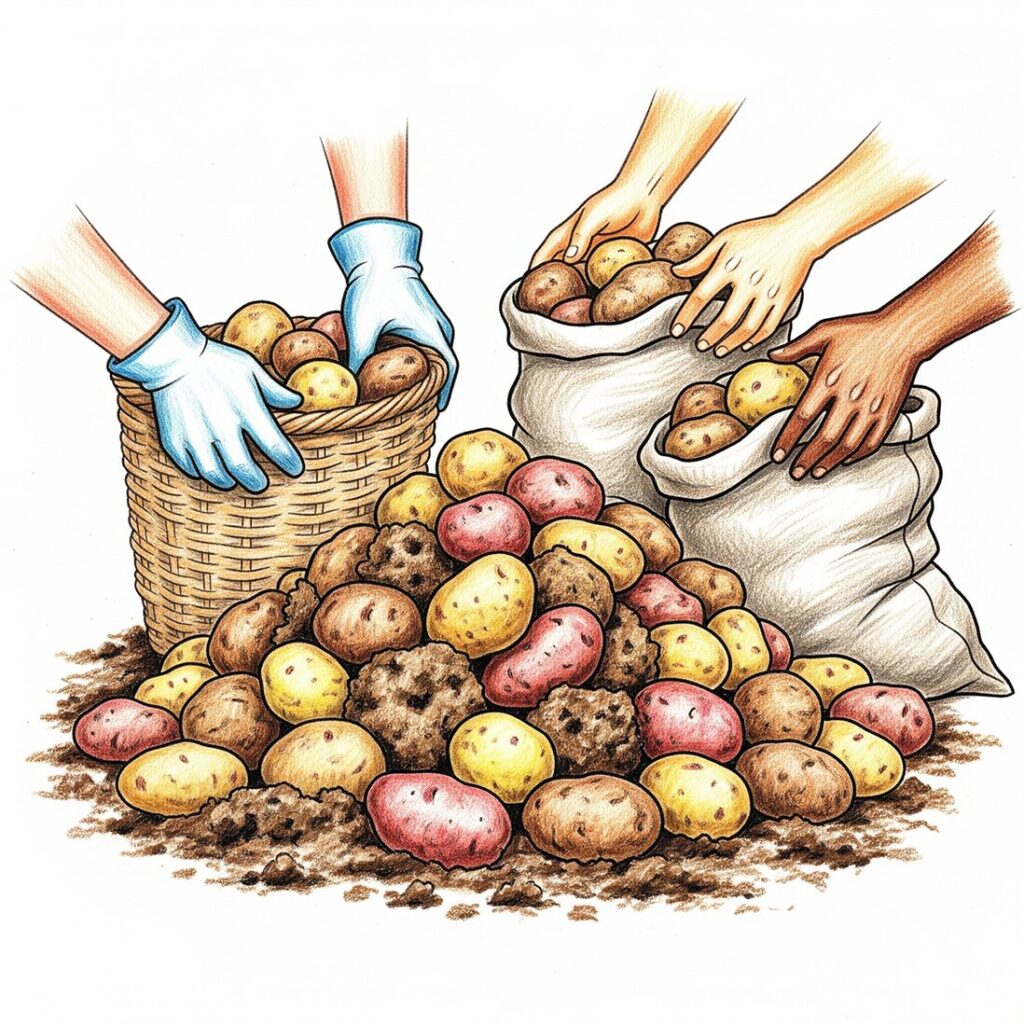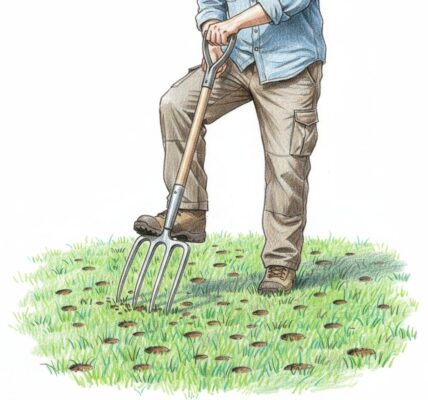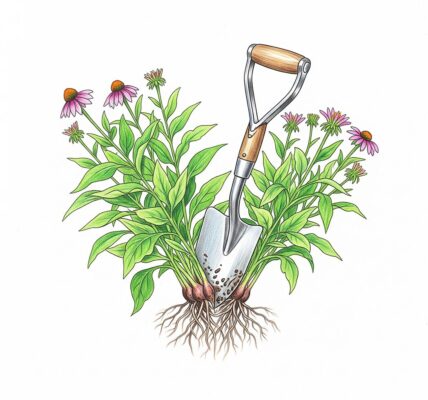
Harvesting your main crop of potatoes is a rewarding part of gardening. Most main crop varieties are ready to dig up from late summer to early autumn, usually 15 to 20 weeks after planting. You’ll know it’s time when the plant’s leaves start to turn yellow and die back, showing that the potatoes have finished growing. For better storage and flavour, cut down the leaves about two to three weeks before you plan to harvest. This gives the potatoes time to develop tougher skins, which helps them last longer in storage.
When the time comes to harvest, choose a dry day if possible. Start by carefully loosening the soil around the potato plant with a garden fork, taking care not to pierce the tubers. Push the fork into the soil a little way out from the plant’s center to avoid damaging the potatoes. Once the soil is loose, gently lift the entire plant and reveal the hidden treasure beneath. You’ll find a cluster of potatoes clinging to the roots and scattered throughout the surrounding soil. Use your hands to feel for any remaining potatoes, as it’s easy to miss some.
After harvesting, leave the potatoes on the surface of the soil for a few hours to dry and cure in the sun. This final drying step helps to harden the skins and heal any small nicks or scratches. Once the potatoes are dry, gently brush off any excess soil—do not wash them, as this can encourage rot. Store them in a cool, dark, and well-ventilated space, like a shed or cellar, in a sack or basket. Stored properly, your homegrown potatoes can last for many months, providing a delicious and rewarding taste of your labor throughout the winter.




